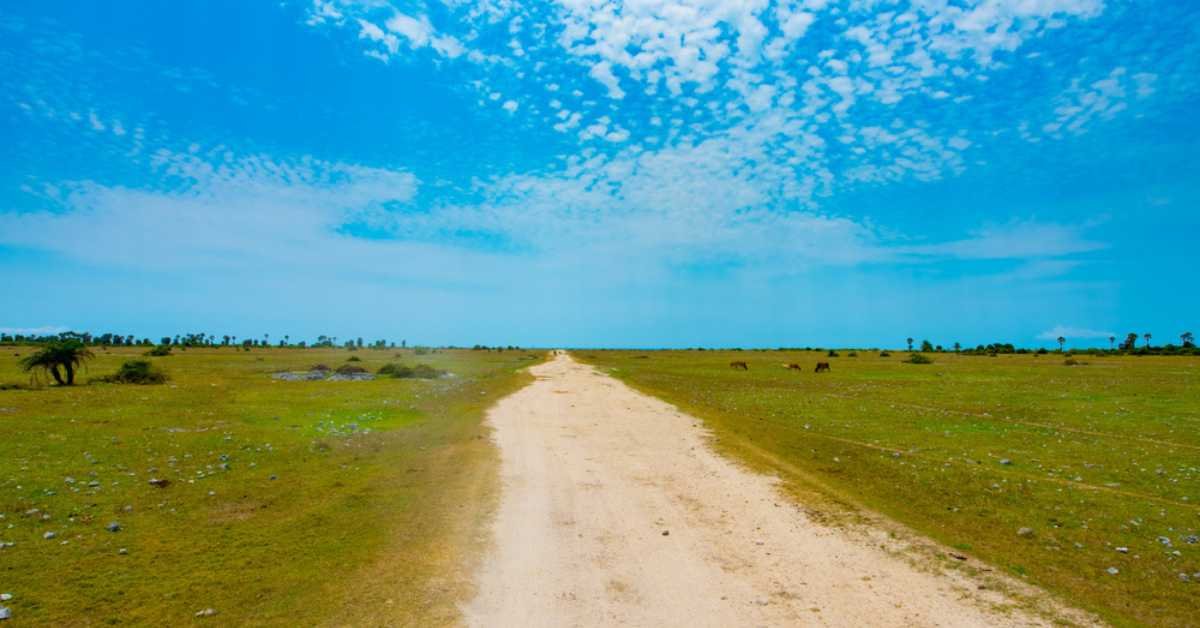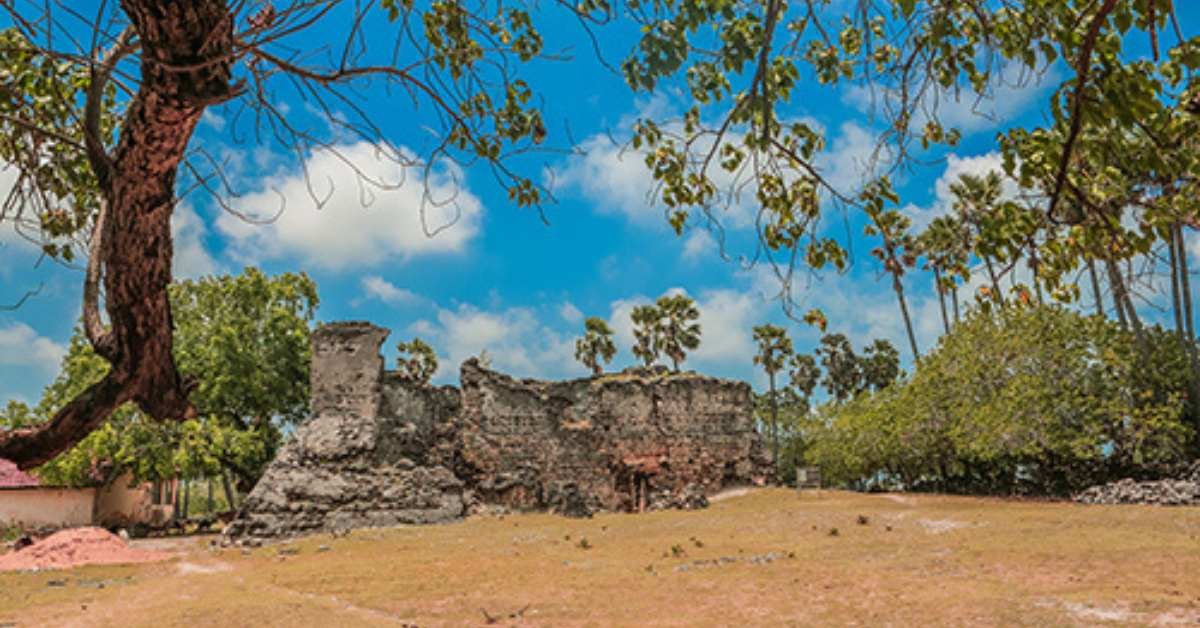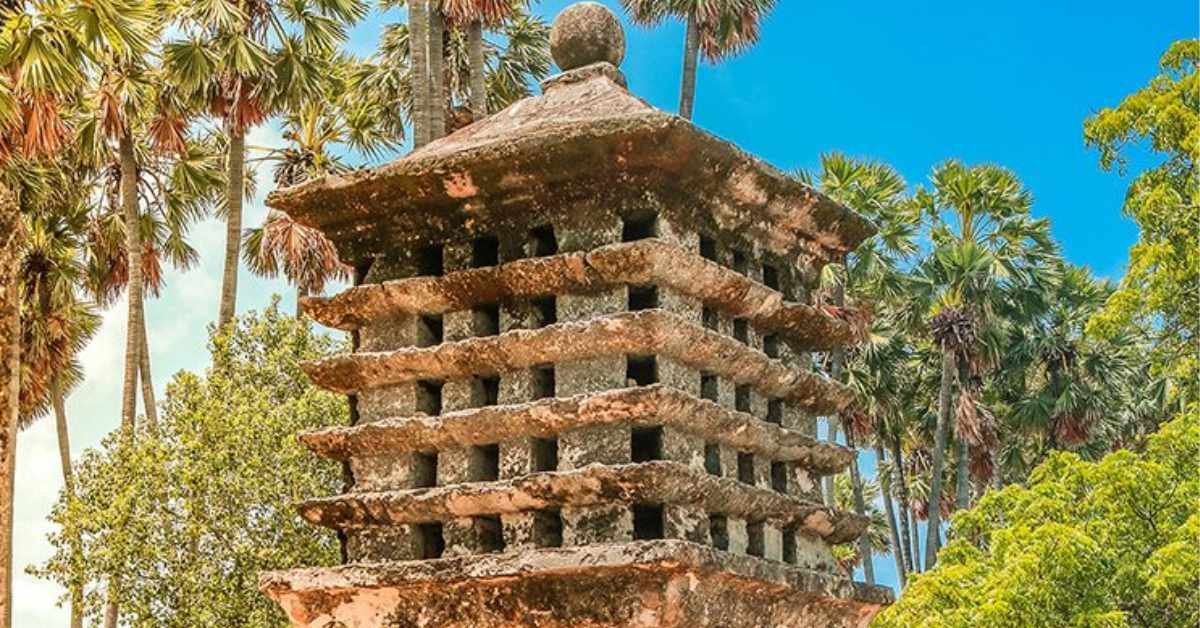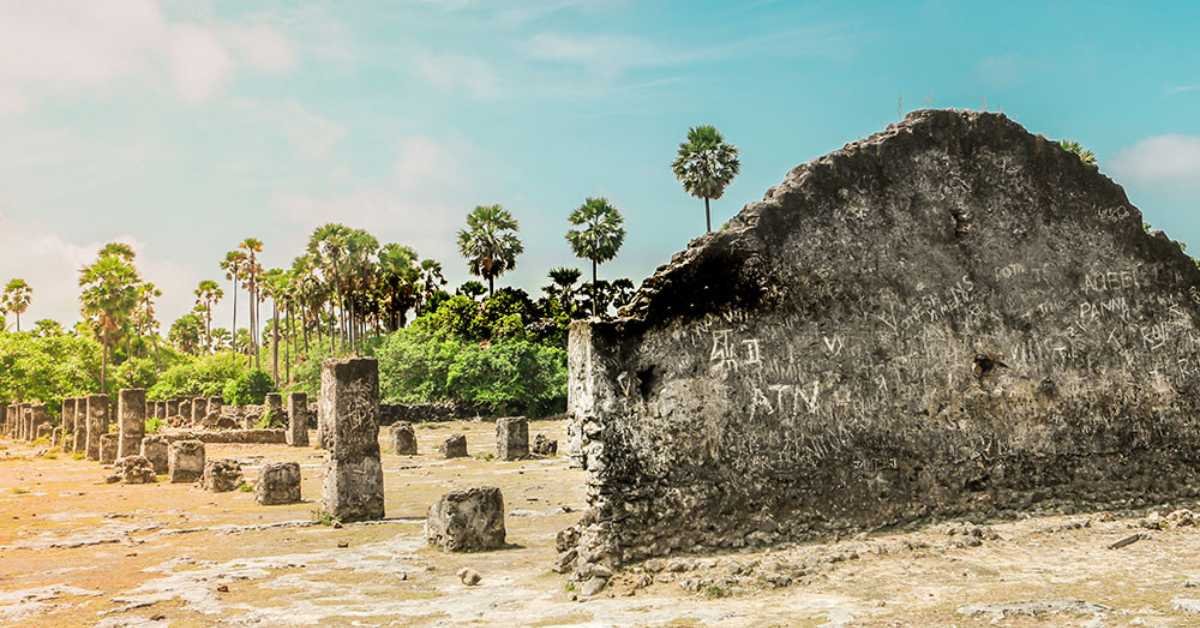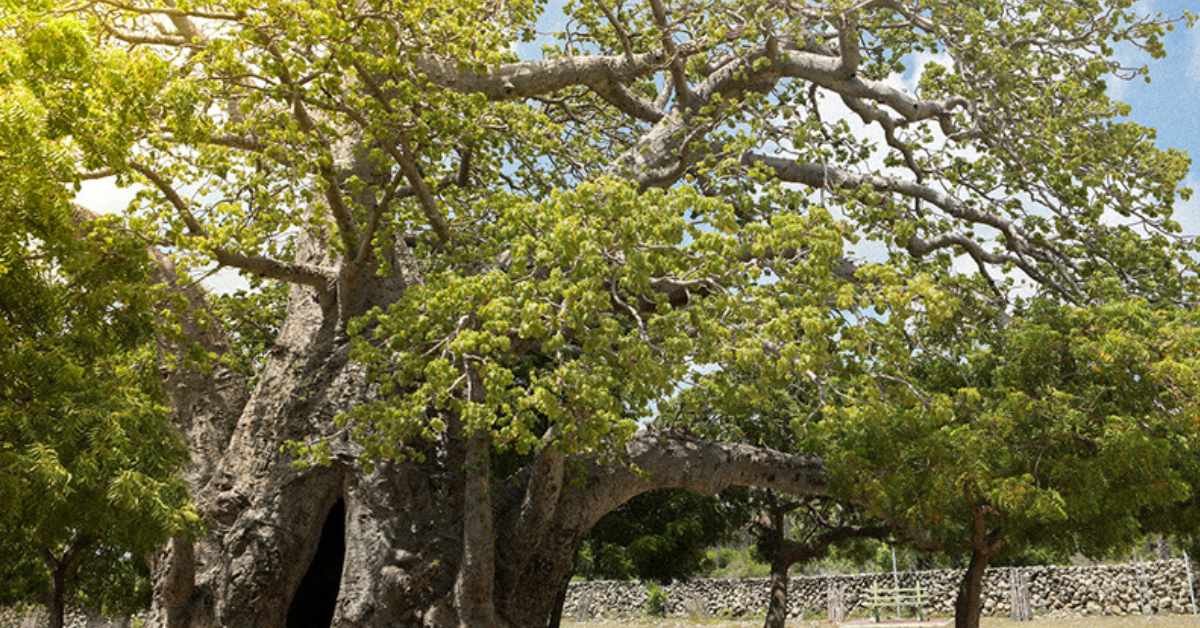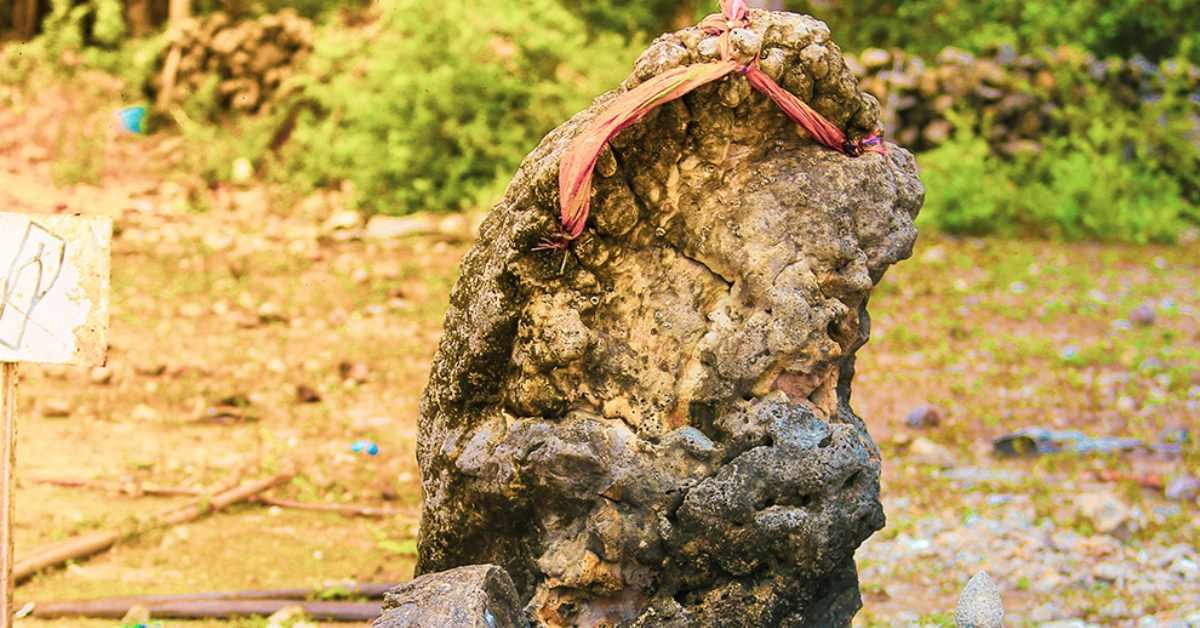
Delft Island, located on the North coast of Sri Lanka near Jaffna, is a hidden gem waiting to be explored. This enchanting island is known for its natural beauty, rich history and cultural significance. In this article, we will take you on a journey to discover the wonders of Delft Island, from its challenging but fascinating journey to its historical landmarks and unique attractions.
1. Accessing Delft Island
Options for reaching Delft Island (water and air)
To access Delft Island, you have two options: water and air. The most popular and convenient mode of transport is the ferry service, which operates regularly. Alternatively, you can fly to Delft Island by taking a small aircraft.
The ferry service is a popular mode of transport.
The ferry service to Delft Island is a favourite among travellers. It offers a unique opportunity to enjoy the scenic beauty of the surrounding ocean while making your way to the island. The ferry departs from Kurikadduwan Jetty, and the journey is an adventure filled with anticipation.
Departure from Kurikadduwan Jetty and the journey to the island
As you depart from the Kurikadduwan jetty, you’ll be greeted by the gentle waves and the refreshing sea breeze. The trip to Delft Island is approximately one hour, and during this time, you can immerse yourself in the breathtaking views of the neighbouring islands and the vibrant marine life that calls this area home.
2. Journey to Delft Island
The journey to Delft Island is a means of transportation and a remarkable experience.
Description of the challenging but fascinating journey
The journey to Delft Island can be difficult, as the sea conditions vary. However, the unpredictable nature of the trip adds to its charm and allure. It’s a testament to the untouched and unspoiled nature of the island, making the arrival even more rewarding.
Scenic views of neighbouring islands and marine life
As you sail towards Delft Island, keep your eyes peeled for the breathtaking views of the neighbouring islands. The turquoise waters and coral reefs create a picturesque backdrop, offering glimpses of the diverse marine life that inhabits this region. If you are lucky, you might spot dolphins or sea turtles swimming alongside the ferry.
Potential for the development of diving locations
Delft Island’s new underwater world holds excellent potential for diving enthusiasts. It’s crystal-clear waters and abundant marine biodiversity make it an ideal destination for exploring vibrant coral reefs and encountering many colourful fish species. Diving facilities and tours are gradually being developed to cater to the growing interest in exploring this underwater paradise.
3. Arrival on Delft Island
Upon reaching Delft Island, you will be welcomed by a statue of Rev. Fr. Xavier Thanninayagam, a prominent figure in the island’s history.
Welcoming by a statue of Rev. Fr. Xavier Thanninayagam
Rev. Fr. Xavier Thanninayagam, a Catholic missionary, played a significant role in the development of Delft Island. The statue serves as a reminder of his contributions and sets the tone for the cultural and historical exploration that awaits you.
Indications of a fishing village
As you step foot on Delft Island, you’ll notice indications of its fishing village heritage. Traditional fishing boats dot the shoreline, and the smell of fresh seafood lingers in the air. This glimpse into the local lifestyle provides a unique perspective on the island’s history and the role of fishing in its economy.
Importance of packing lunch and limited dining options
It’s important to note that Delft Island has limited dining options. While there are small food stalls available, it is advisable to pack a lunch or snacks to ensure you have enough sustenance to explore the island entirely. This also allows you to picnic amidst the island’s natural beauty.
4. Exploring Delft Island
Delft Island offers various transportation options for exploring its many attractions.
Transportation options: walking, three-wheeler, or smaller lorry
To explore Delft Island, you have several transportation options. You can explore the island on foot, rent a three-wheeler for convenience, or opt for a smaller lorry to accommodate a group of people. Each mode of transportation offers a unique experience and allows you to immerse yourself in the island’s natural surroundings.
The island’s resemblance to the mainland and the presence of Palmyra’s growth
As you venture deeper into Delft Island, you’ll notice its striking resemblance to the mainland, with lush greenery and vast open spaces. However, one of the island’s distinguishing features is the presence of Palmyra growth, which adds to its natural charm. The tall, swaying Palmyra trees create a mesmerizing landscape, providing shade and a sense of tranquillity.
Observing the lifestyle of the island’s inhabitants
Take the time to observe and interact with the friendly locals of Delft Island. Their lifestyle revolves around the island’s resources, such as farming and fishing. Engage in conversations, learn about their customs and traditions, and gain insights into their way of life. It’s a chance to appreciate the simplicity and resilience of the island’s inhabitants.
5. Delft Island Fort
Visiting the Old Dutch Portuguese Fort
One of the must-visit landmarks on Delft Island is the Old Dutch Portuguese Fort. Steeped in historForthis Fort is a testament to the colonial era and the island’s strategic importance. Exploring the defence allows you to step back in time and envision the lives of those who once occupied its walls.
DescriptionFort’se Fort’s construction and Purpose
The Old Dutch Portuguese Fort stands as a testament to the architectural prowess of its time. Constructed using coral stones and local materials, it has withstood the test of tiFortThe Fort served as a defensive structure during the conflict. In addition, it provided shelter for the colonial forces stationed on the island.
Preservation of the pillars, walls, and rooms
Efforts have been made to preseFort’se the Fort’s pillars, walls, and rooms, allowing visitors to witness its grandeur and imagine its former glory. Walking through the corridors, you’ll get a senseFort’se Fort’s layout and the challenges faced by those who defended it. More Details
6. Pigeons Nest and Coral Walls
Discovering the Pigeons Nest used for communication
Within the vicinity of the Old Dutch Portuguese Fort, you’ll come across the Pigeons Nest. This structure was used in the past as a means of communication, as carrier pigeons were released from here to relay messages. It is a testament to the ingenuity of communication methods during that era. More Details
The surrounding wall is made of coral stones.
The Pigeons Nest is surrounded by a wall constructed using coral stones. This architectural feature adds to the uniqueness of the structure and showcases the use of local materials in construction. In addition, the coral walls have weathered the test of time, standing as a testament to the island’s natural resources.
Importance of the reflective surface of the Queen’s Tower
Adjacent to the Pigeons Nest, you’ll find the Queen’s Tower, which features a unique reflective surface. This surface was a signalling mechanism, reflecting sunlight to communicate with nearby islands. It’s a fascinating example of the island’s resourcefulness and the innovative methods employed in the past. More Details
7. Horse Stables and Wild Horses
Exploring the horse stables used during the Colonial Period
Delft Island has a historical connection to horses, as it served as a colonial outpost. The horse stables, remnants of that era, offer a glimpse into the island’s equestrian history. Explore these stables to learn more about the role horses played in transportation and the lives of the people on the island. More Details
Presence of a giant footstep and its local significance
While exploring the horse stables, you’ll see a giant footstep etched into the ground. This footstep holds local importance and is believed to be associated with a legendary figure. It serves as a testament to the island’s folklore and adds an element of mystery to your journey.
Encounter with wild horses and their preservation.
Delft Island is home to a population of wild horses. You may encounter these majestic creatures roaming freely as you traverse the island. Efforts are being made to preserve and protect these horses, which have become integral to the island’s identity. Observe them from a distance and appreciate the beauty of their untamed existence. More Details
8. Baobab Tree and Growing Rock
The presence of the giant tree on Delft Island: the Baobab Tree
Delft Island is home to the big Baobab Tree in the region, standing tall and proud. This ancient tree holds immense cultural and natural significance. It’s impressive size and unique shape make it a sight to behold, drawing visitors from far and wide. More Details
Description of the tree’s characteristics and origin
The Baobab Tree is characterized by its stout trunk, gnarled branches, and thick, fibrous bark. It is a testament to the island’s resilience and ability to support life in harsh conditions. The tree is believed to have originated from the African continent, carried across the ocean by ancient currents.
The growing rock and its religious significance
Another intriguing attraction on Delft Island is the growing rock, which holds religious significance for the locals. It is believed to gradually increase in size over time, symbolizing the island’s spiritual connection and the growth of faith. Visitors often find solace and inspiration in the presence of this remarkable natural phenomenon. More Details
9. Locals’ Resourcefulness
Natives cultivating paddy and harmonizing with the island’s resources
Delft Island’s inhabitants showcase remarkable resourcefulness in their way of life. The locals cultivate paddy, adapting to the island’s unique ecosystem and utilizing its resources effectively. Witnessing their harmonious coexistence with the land is an inspiring experience that highlights the island’s sustainability efforts.
Minimizing visits to the mainland
The self-sufficiency of Delft Island’s residents is reflected in their efforts to minimize visits to the mainland. They rely on their resources, reducing their ecological footprint and preserving the island’s pristine environment. Their commitment to sustainable practices serves as an inspiration for visitors to adopt responsible travel habits.
Mention of other attractions on the island, such as temples and Dutch heritage sites
In addition to the landmarks mentioned earlier, Delft Island boasts several other attractions. Temples with cultural and religious significance dot the island’s landscape, inviting visitors to experience tranquillity and spirituality. In addition, Dutch heritage sites, remnants of the island’s colonial past, offer insights into its historical connections with the Netherlands.
10. Conclusion
Delft Island, with its rich history, natural beauty, and vibrant culture, is a destination that captivates the hearts of travellers. From the challenging journey to the island to exploring its historic landmarks and encounters with its inhabitants, every step reveals a new facet of its allure. By appreciating and preserving its treasures, we ensure that future generations can also experience the magic of Delft Island.
FAQs
1. Are there accommodations available on Delft Island? Yes, there are a few guesthouses and homestays available on Delft Island. However, making arrangements in advance is recommended, as the options are limited.
2. What is the significance of the Baobab Tree on Delft Island? The Baobab Tree on Delft Island holds cultural and natural significance. It symbolizes the island’s resilience and unique ecosystem and is a majestic landmark for visitors.
3. How can I reach Delft Island by air? To reach Delft Island by air, you can take a small aircraft from select airports in Sri Lanka. However, the availability of flights may vary, so it’s advisable to check with local airlines or travel agencies for updated information.
4. Are there any archaeological sites on Delft Island? Yes, Delft Island is home to several archaeological sites, including the Old Dutch Portuguese Fort and temples of historical importance. Exploring these sites provides insights into the island’s cultural heritage.
5. Can I see the wild horses up close on Delft Island? While wild horses roam freely on Delft Island, respecting their natural habitat and observing them from a distance is essential. Getting too close may disturb or endanger them. Instead, enjoy the beauty of these creatures while ensuring their well-being.
Accommodation options Near Delft Island

Ravindu Dilshan Illangakoon
As co-founder and Head of Content at Sri Lanka Travel Pages, I ensure that every blog post we publish is AMAZING.


